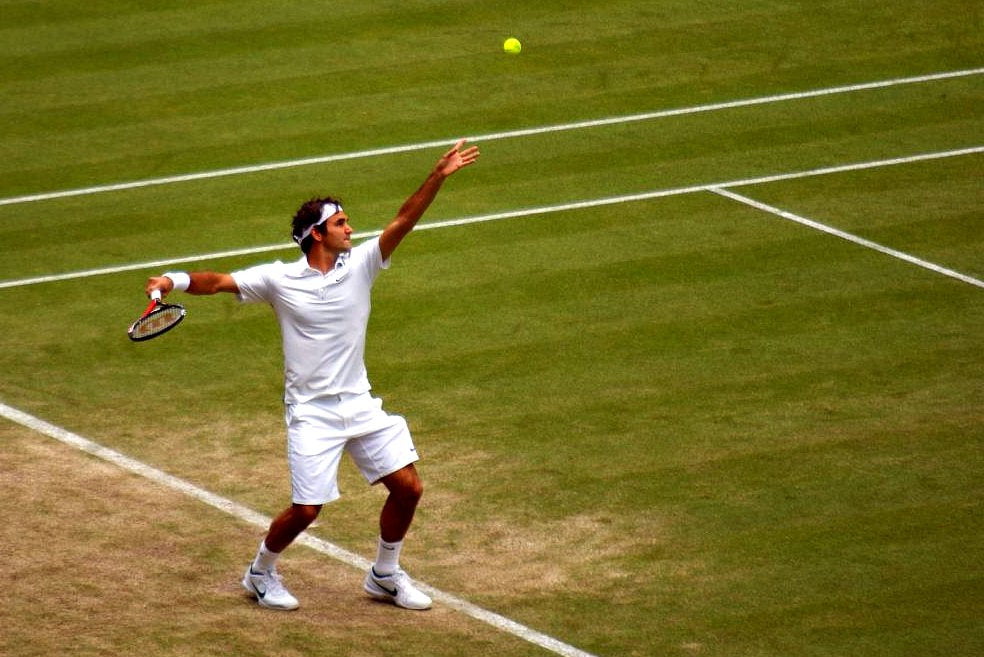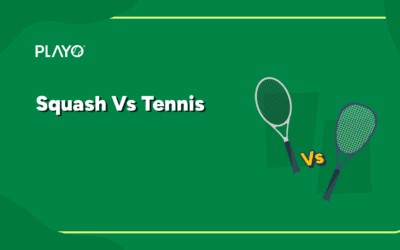SERVE TECHNIQUES IN TENNIS | Given that it starts and occasionally ends a point, the serve is the most important shot in tennis. Without at least a solid serve, a player will struggle to forge a career at the elite level, as a competent returner will routinely punish him or her. Even the most broadly talented of players sometimes have to rely on their serves on key points.
So, here are the 5 best serving techniques we have seen throughout the Open Era.
#5 – John Isner:
Perhaps the most astonishing aspect of John Isner’s serving is his first-serve percentage. Of course, the 6’10” American’s height gives him a great advantage in that regard, widening the service box, but to be so consistent when hitting at such speed is freakishly good.
We’ve seen enough good servers to know that a lot of different stances can succeed. But whether you keep both feet in place or move your back foot up to meet your front one, there are some basic elements to every good stance. Isner’s right foot is a little behind his left foot, which points diagonally toward the net post. This almost-sideways position allows him to coil more and get his racquet moving faster. This is crucial because when your body opens up early, you lose energy and power.
Isner also holds pretty much every serving record under the sun thanks to his historic 11-hour epic with Nicholas Mahut at Wimbledon in 2010, when he hit 113 aces and held serve a whopping 84 consecutive times.
Oh and his second serve is devilishly wicked, to say the least.
#4 – Andy Roddick:
If the serve is associated with one player, it is probably the Texas native. Although he wasn’t as tall as some of the other players on this list, the Roddick serve is one of the game’s great weapons. He held the world record for many years, serving a 155mph lightning bolt in a 2004 Davis Cup match—and it wasn’t even an ace. Roddick’s second serve is similarly potent, bounding off the court like a kid on a trampoline.
Andy’s serve averaged about 130 mph with a spin rate of 2400 rpm. That compares to Sampras at 118 mph and 2500 rpm. It appears then that Andy is transferring more total energy to the ball. To do this, Roddick must generate more racket head speed.
is stance is a narrow one, with his front foot at a slight angle from the baseline and the back foot virtually parallel. As he tosses the ball and his knees start to bend, the front foot moves very slightly backward, narrowing the stance even more.
One of the elements that distinguishes roddick’s serve is his ability to create a strong loading and coiling of the lower body through a pinpoint stance. Andy Roddick goes into a deep knee bend very quickly, and this is what gives the motion its jerky quality. At the end of the knee bend, his weight is almost equally distributed to the balls of both feet. As he begins to launch up into the serve, he is pushing off both feet and getting a very powerful leg drive into the shot.
#3 – Ivo Karlovic:
Karlovic’s serve motion begins in a fairly conventional stance. His left hand holds the ball underneath the racquet at his waist. The ball is actually touching the racquet at this point. Many players like to have a few element of their serve repeated every time, especially at the starting point. Karlovic obviously likes to feel the ball on racquet as a starting point.
Probably the most important ingredient in having a truly powerful Karlovic-like serve is to be relaxed throughout the service motion and to NOT attempt to “muscle” the ball!!!
However, the Karlovic serve is hard to imitate because of the unique advantages that the Croat offers him over the average tennis player.
#2 – “Pistol” Pete Sampras
With 14 majors under his belt, including a joint-record 5 US Open titles, 7 Wimbledon championships, Pete Sampras is widely considered one of the greatest tennis players of all-time.
Despite being an excellent all-court player, Pete Sampras earned the moniker “Pistol Pete” for very good reason. Sampras’ pistol-like serve was deadly accurate and deceptively fast. Oh and he technically didn’t even have a second serve, because there was virtually no difference between the two.
Sampras’s serve followed a more classic approach. He utilized a more circular windup, taking the time to deliver himself the powerful bomb at contact. Throughout his motion, Sampras is completely relaxed. There is little to no tension as can be seen by the fluidity of his serve. His serve contains no hitches, no pauses and no extra motion often seen in lower level servers.
Second only to Federer in terms of its precision, the Sampras first serve was as reliable as they come. So effective was his serve, he would often settle for one break and then coast for the rest of a set, seemingly convinced that he would remain unbroken.
#1 – Roger Federer:
After playing a loose service game and finding himself a break point down, out comes a booming Roger Federer first serve to save the day. Federer’s unique, but highly reliable, ball toss and arching of his back help him blend consistency with explosiveness, as well as an ability to find angles that few can. His reliable second serve, which he often uses a kicker technique with, also helped him achieve a high career second-serve win percentage
The Swiss possesses arguably the most accurate first serve in the history of men’s tennis. The 17-time Grand Slam champion rarely serves over 125mph, but he really doesn’t need to. Sacrificing speed for control, Federer adds a little extra spin to his first delivery and regularly cleans the lines as a result.
Federer’s motion is so smooth and effortless that it doesn’t attract the same attention as Pete or Andy. What makes Federer less distinctive is probably what also makes him a better model. It’s a simpler, more classical motion with fewer extreme elements.
At the top of Federer’s wind-up he gets into the trophy position. This position gets its name from the body position in many typical tennis trophies. Check the “ATP” logo to see what I mean. This is very important but no other player ever reaches a perfect trophy position.
During the follow through, Federer finishes with his body inside the court. This indicates that Federer’s momentum is moving forward and into the court, which is important especially for the first serve – as well as for generating additional velocity on the serve. Typically, the racket will finish on Federer’s left side.
Oh and did I mention Federer’s serve is impossible to read? Yeah, that’s right. Unlike other players, Federer hits all of his serves from the same ball toss and hence it’s tough to guess which way he’s going and the only option left for players is to react to the served ball after the fact.





0 Comments